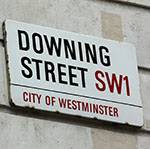By Jon Jonsson, Senior Portfolio Manager, Investment Grade and Ugo Lancioni, Senior Portfolio Manager, Currencies at Neuberger Berman
Fascinating as the politics are, for investors what really matters is simple. First, financial markets continue to price for a substantial Conservative majority, albeit with a recent pick up in sterling short-term implied volatility. Second, fundamentals will ultimately determine market pricing, the UK’s fundamentals will be dominated by the Brexit process, and that process has a very tight timetable: this election matters less for the government it selects than for the precious negotiating time it threatens to waste.
Markets Sanguine as Conservatives Blow Poll Lead
When the election was called in April, the Conservatives basked in a 20-point poll lead and currency markets still sat on their post-Brexit sterling shorts. That poll lead has shrunk to just five or six points. The prospect of the Conservatives returning to parliament with a smaller majority has become very real, very quickly.
However, no market is pricing in the probability of a “hung” parliament, where no party holds an overall majority. Sterling shorts have been closed out aggressively, and GBPUSD has bounced to 1.30 from lows around 1.20. Part of this move has been on the US dollar side as the “Trump trade” has faded, but nonetheless sterling positioning is positive in anticipation of a bigger Conservative majority. That leaves much of the risk on the downside, and an extremely strong Conservative vote required to push sterling higher.
The Brexit Clock is Ticking Against the UK
A bigger Conservative majority would represent continuity and a strengthened mandate in Brexit negotiations, which will be tough in terms of both their timetable and their terms.
Lest we forget, this weekend brings yet another important election in France. Emmanuel Macron’s La République en Marche! is predicted to do well, lending fresh impetus to his vision of closer fiscal cooperation in the Eurozone, and to the already improving business and market sentiment on the Continent. This could boost confidence among the EU-27 as it enters negotiations with the UK.
The timetable is demanding because the final Brexit agreements must be ratified by all 27 EU member states – potentially a nine-month process. That suggests the financial terms of Brexit and the rights of EU citizens in the UK (and vice versa) need to be decided by the end of this year; a draft of the bilateral relationship needs to be ready by the first quarter of 2018; and transitional arrangements for UK access to EU internal markets need to be in place by the third quarter.
This clock is ticking primarily against the UK. The longer things are delayed, the tougher the terms of Brexit are likely to be and the more likely a breakdown in talks becomes. How much of a delay might tomorrow’s election result cause? We identify four scenarios.
The Election Result: Four Scenarios
Scenario 1: The Conservatives increase their majority.
Even if Theresa May does not achieve the thumping majority polls indicated in April, an increase should seal her leadership. Markets are likely to hold recent gains in response to this continuity. A greater majority might also discourage internal sniping and relieve pressure for transparency into the Brexit negotiating process, making that process smoother.
Scenario 2: The Conservative majority is reduced.
A smaller majority could jeopardize May’s leadership. Internal criticism of her campaign suggests a willingness to move against her. While a new Prime Minister might entertain a “softer” Brexit, the market is likely to focus initially on the negotiating time wasted by the leadership contest and the reorientation of the UK’s negotiating stance.
Scenario 3: A “hung” parliament.
Coalition wrangling could take months. The most likely deal is between the Labour and Scottish National parties, possibly supported by the Liberal Democrats. Once again, while this could open the door to a softer Brexit the market is likely to focus initially on the disruption it will cause at this crucial time. This threatens to be the scenario of greatest market volatility.
Scenario 4: A Labour party majority.
Under normal circumstances a Labour government delivering the high-taxation, broad-nationalisation and fiscally-loose manifesto of its current leadership would be very bad news for markets. But these are not normal circumstances. When the most crucial variable for the economy is Brexit, and the most crucial aspect of Brexit is the demanding timetable, almost any government is better than no government. That said, reorienting the UK’s negotiating stance will waste valuable time, as will the task of briefing a new set of ministers.
Long-term Value, but Elevated Risk
The UK economy performed relatively strongly in the nine months following the Brexit referendum. Weaker sterling helped exporters, and consumers brought purchases forward to beat rising inflation. But data has softened over recent weeks, and rising uncertainty over the Brexit process, not to mention a growing prospect of a big delay or breakdown in negotiations, could further dampen consumer and business confidence. As the Trump trade runs out of steam and the Continental European recovery gathers momentum, the UK is entering a highly unsettled period.
We are currently neutral in our positioning in both UK rates and sterling. It made sense to be long sterling until a few weeks ago, and even after the recent rally the currency remains quite attractively-valued for the longer term – but in our view the potential for substantial volatility as the election result emerges this evening makes the risk-return trade-off unpalatable for now.
|


